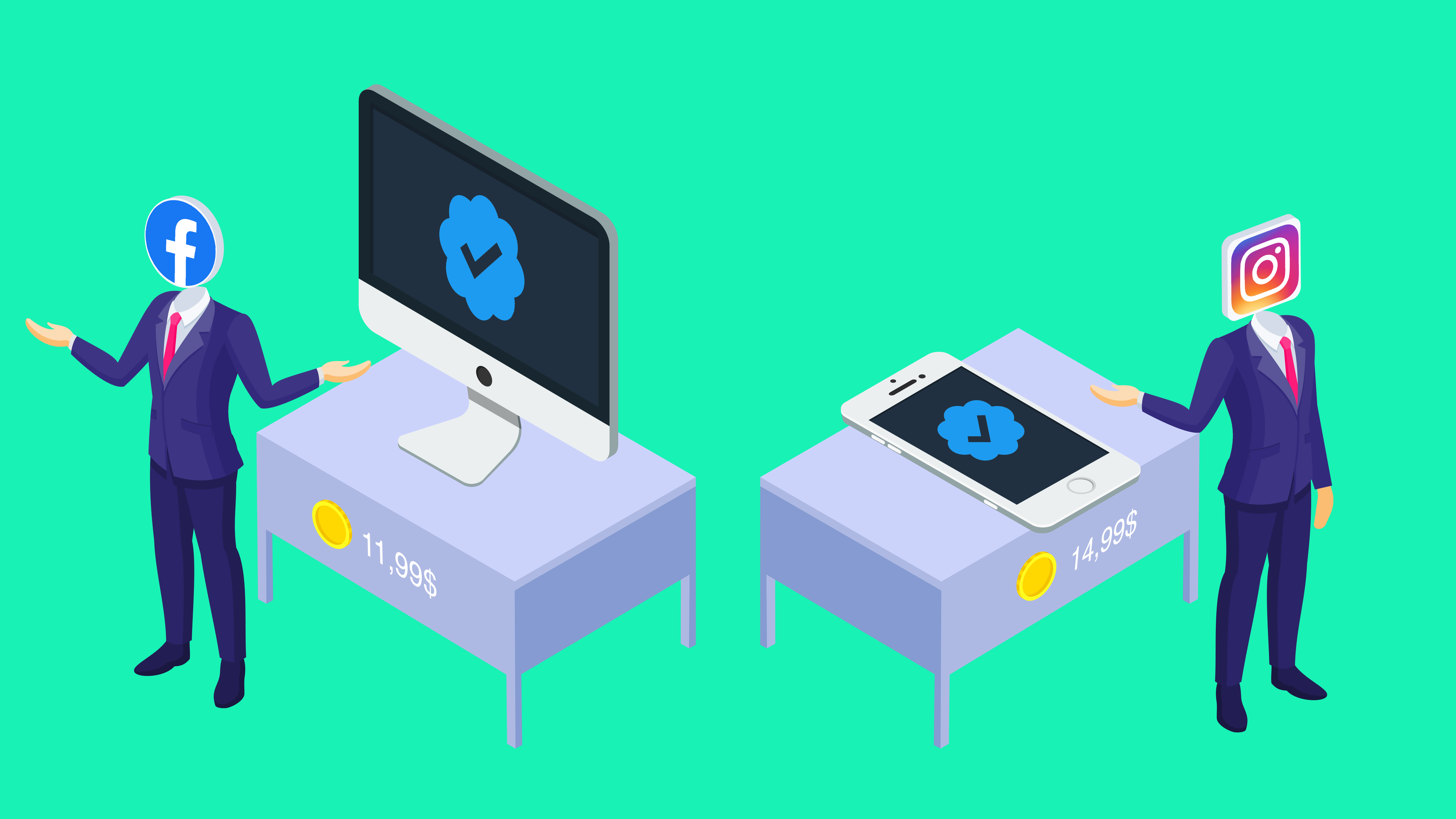Author: Steffen Meyer, Mobile Marketing Content Specialist
Meta’s blue checkmark won’t be free anymore: Instagram and Facebook users in the US now have to pay to get a verified badge which signals to other users that the account is run by the very person it claims to be and not by some hobby comedian or fraudster.
Users are charged $11.99 per month on the web, or $14.99 on iOS and Android – the difference in the cost comes most likely from the commission fees Apple and Google charge.
Alongside with this badge come some more bonuses. According to Meta, users receive:
- Access to account support for most common issues
- Active impersonation monitoring for accounts
- More visibility for Meta Verified subscribers across Instagram, in search and comments on other people’s photos and videos
- More visibility for Meta Verified subscribers as suggested accounts to follow
- More recommendations in places like Explore and Reels on Instagram
- Exclusive Stickers in your Instagram Stories
Already, there’s alot of critique around this paid subscription model: First of all, there’s the argument that people can suddenly buy themselves a blue check, while in the past only relevant people could have applied for it.
This argument misses the point that getting verified was rather random in the past as well. Sometimes it just depended on knowing someone at Meta to get the blue check, no matter how relevant the account was. Probably this was caused by the sheer amount of applications – which maybe will decrease now when it costs something.
Looking at the additional benefit of customer support, some argue that Meta is now charging for something they never really did well. Furthermore, the bonus of monitoring impersonation seems to make sense only for celebrities, not for small or medium enterprises that promote their services or products on the social networks.
All in all, Meta Verified targets professional users which are maybe less than one percent of all users on the platform. Even though it may only be of concern to a few people now, this subscription model could mark a shift in social media.
If you are paying for the product, then what’s the product?
The business models of social networks like Facebook, Instagram, Twitter or TikTok were always well summed up by a quote from the 2020 Netflix Documentary “The Social Dilemma”: “If you are not paying for the product, you are the product”. Meaning that the main revenue of platforms was collecting user data and earning money by selling marketers the possibility to target specific audiences.
However, times are changing.
With Apple’s and Google’s privacy initiatives and more and more regulation by institutions like the EU’s Digital Services Act and Data Markets Act, the collected data isn’t as granular as it used to be and thus not as valuable anymore.
So social networks are not only broadening advertising possibilities, they are looking for new revenue streams as well.
In some way, the industry can count itself lucky that Twitter’s adventurous owner Elon Musk has set out to try new things for his recently acquired company, while others can just watch, learn and copy.
One of Musk’s most famous initiatives was making people pay for the blue check which was most likely the template for Meta Verified. So while the social networks still collect data, they see verification or even visibility on their platform as a product to sell. Who knows what will come next?
A daring look into the crystal ball
There’s alot of movement in the market and social media is becoming more and more professionalized, with creators using the platforms to promote their ideas, services or products and reducing the “social” in “social media” for most users to liking, commenting and sharing content.
The emphasis on “media” in “social media” grows stronger and stronger and so will the competition with other media, such as television or streaming services. Who didn’t catch oneself looking at the smartphone while there is a movie running in the background?
This could mean that Meta Verified is only the start of a new paid era of social media – not only for professional but for normal users as well.
As Gizmodo reports, “according to one study, in the U.S., Facebook users say they would have to be paid in the range of $40 to $50 to leave the social networking service for one month.”
So if users put a certain value to the platform, it’s possible they would pay for some kind of subscription model that grants them benefits as well. If you go even further down this rabbit hole, this could result in users having to choose which social network they gonna pay for if they don’t want to pay for all of them. So will the Streaming Wars of Netflix, Disney+ and Co. be followed by Social Media Wars?
What marketers should consider
Okay, breathe in, breathe out and let’s take a few steps back because it’s hard to predict how this subscription-based model will work out.
Meta could as well cancel it if too many of their users quit their network and look for alternatives. Or new digital innovations – see the buzz around artificial Intelligence, our next topic on this blog – will disrupt the market even more and turn the whole game upside down. Who knows?
For now though, there are a few things markteres to consider:
- Watch out for actual reports by creators how the subscription-based model actually improved their visibility, like this one that doesn’t sound too optimistic. It’s always better to look at experiences and not just trust Meta blindly on its promises.
- Accounts with a blue check are not necessarily the better choice to cooperate with, since it (still) doesn’t say much about their relevance but rather their willingness to pay. Consider if their audience fits your product or service or how large the engagement of their postings are than just evaluating if they are verified or not.
- If this move by Meta indeed marks a shift towards an era of paid social media, it’s likely that users and creators will focus on networks that suits them, rather than being present on all of them, since it won’t be only a matter of time but of money as well. This means that it gets more important than ever for marketers to develop platform-designed strategies – and not just to create content pieces to distribute on Facebook, Instagram, Twitter and TikTok alike.
- As a general rule, it’s wise to not only bet on social media ads to generate demand. Have a look at other possibilities like native advertising or how to draw users from the web to your app that we described in previous blog posts.
- Furthermore, social media is just one part of a digital marketing strategy and you should always have an overview of all the channels and how they connect with each other. For this, we created our Marketing Master Map which you should get here now.
💡 Knowledge sharing is at the core of what we do. Sign up for our newsletter and become part of our community on LinkedIn to learn how to make apps succeed in the competitive mobile landscape.
Helpful Links:




